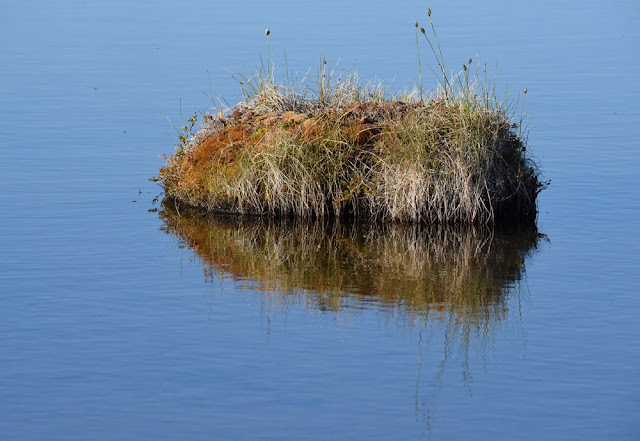Late spring in north Norway
The were persistent northerly winds blowing over the mountain forest bogs in northern Norway during April and May this year, holding back the thaw and spring growth. There was a week of warm dry weather early in June, which brought some life into the area, but the winds reverted to north and continued to hold things back. Consequently, the plants were late in coming into leaf, like the Mountain Birch
Betula pubescens var.
pumila above, insects were late to emerge and the numbers of breeding birds, which are mostly migrants in that area, were low.
Likewise, the Dwarf Birch
Betula nana was only just opening its leaves and catkins in mid June. And spiders were spinning their first webs of the year.
Then when the sun came out one day in late June the flowers opened. White flowers of Cloudberry
Rubus chamaemorus swept across the heath, and they held onto their delicate flowers for several days. In most years their petals fall quickly. Perhaps they are dropped after pollination, and as there were fewer insects about, that process was slow.
The main ground colour on the drier sandy ridges came from Blue Heath
Phyllodoce caerula, which also was flowering all at once, creating a spectacular show.
Although the sun was shining, the air temperature was still cool, which was good for me as the mosquitoes were scarce and I could study the birds without their incessant attentions. Although, this meant that the butterflies were also slow to fly, like this newly emerged Arctic Fritillary
Boloria chariclea which was basking in the sun to warm itself up. The caterpillars of this butterfly take two years to develop into adults.
Damselflies were very scarce. This recently emerged Northern Damselfly was one of very few that I saw until the end of June, when I left. As it was still in its teneral, not yet fully dried and adult-coloured stage, I was uncertain of its sex.
This White-face Darter
Leucorhina dubia was very recently emerged. It was still perched on the stem of sedge it had climbed up from the water, where it had lived in the bog pool during its larvae stages - there can be up to fifteen such stages. The wings were still closed, slowly stretching out as they dried.
Other White-faced Darters were farther advanced, but still in their teneral form, the perfect clean edges of their wings and lustrous shine were very evident on this specimen.
Spring was very late.























